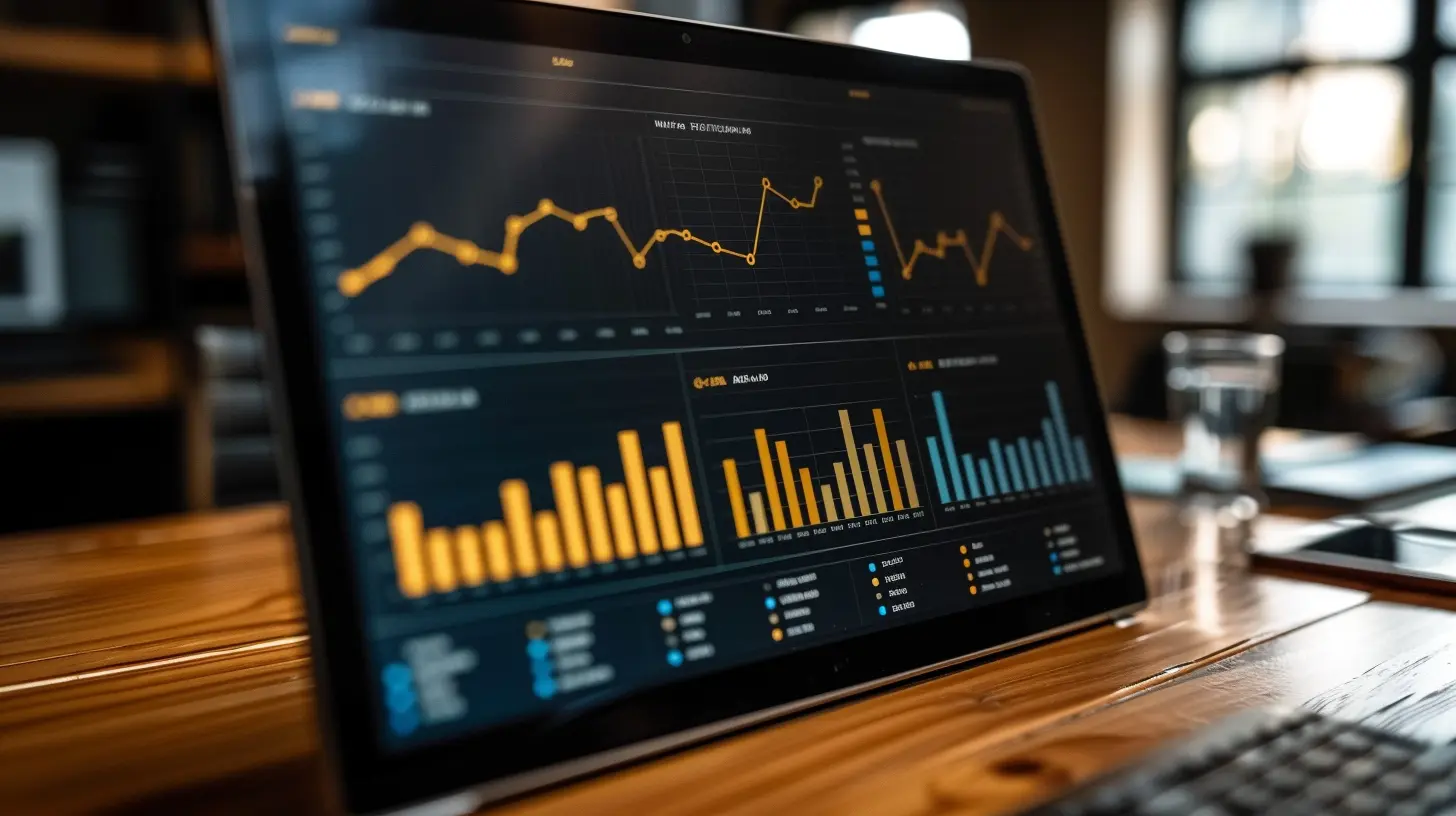Combining Human Expertise with Data Analytics for Superior Results
23 May 2025
Let’s face it – we’re living in the age of information overload. Every click, swipe, and tap generates data, and businesses are swimming in this endless sea of numbers. But here’s the kicker: data alone doesn’t mean a whole lot without a human touch. It’s like having a treasure map without the ability to read it. Combining human expertise with data analytics? That’s where the magic happens. It’s the secret sauce for achieving better outcomes, making smarter decisions, and gaining that oh-so-important competitive edge.
In this article, we’ll dive into why blending human intuition with data analytics isn’t just a good idea—it’s a game-changer. We’ll break it all down, from understanding what makes this combo so powerful to sharing tips on how businesses can make it work seamlessly. So, grab a coffee (or tea, no judgment here), and let’s get into it.
Why Data Alone Isn’t Enough
Data is a fantastic tool, don’t get me wrong. But on its own, it’s kind of like having a Ferrari without a driver—it’s sleek and powerful, but it’s not going anywhere. Businesses collect mountains of data these days, but translating raw numbers into something actionable? That’s the tricky part.The Limits of Data Analytics
Data analytics is fantastic at identifying patterns and trends. Want to know what your customers are buying, when they’re buying it, and even why? Analytics can help you figure that out. However, it has its limits. For one, data can only tell you what has already happened. While predictive analytics tries to take a shot at the future, it still needs human context to guide it.For example, a report might show that sales of umbrellas spike in June. Great, right? But it takes a human to ask, “Why June?” and “What can we do to prepare for this trend?” Maybe it’s rainy season in a certain region, or there’s a marketing campaign that coincidentally aligns with that time of year. Without human input, data insights can feel like a puzzle with missing pieces.
The Value of Intuition
Humans bring a layer of intuition and creativity that machines can’t replicate (at least, not yet). While data analytics can identify “the what,” humans can uncover “the why.” They understand emotional nuances, cultural differences, and the impact of external factors that aren’t always baked into the data. It’s these bridges between numbers and narrative that only humans can build.
The Perfect Blend: People + Analytics
So, how does combining human expertise with data analytics lead to superior results? Think of it like a symphony: data analytics are the instruments, and human expertise is the conductor. Together, they create harmony.Better Decision-Making
When analytics and human insight join forces, businesses can make decisions that are both informed and intuitive. It’s like using GPS to get to your destination but still relying on your instincts to avoid a sketchy shortcut. Data provides the roadmap, but human expertise ensures you don’t hit bumps along the way.Enhanced Innovation
Data can reveal gaps in the market or emerging trends, but it’s the human creative spark that turns those insights into groundbreaking innovations. For instance, data might show that customers are looking for more sustainable products. It takes people to design and market those products in a way that resonates emotionally with buyers.Reduced Bias
Here’s a surprising twist: combining human expertise with data analytics can actually help reduce bias, rather than amplify it. While humans are prone to personal biases, data provides objective evidence. When the two work hand in hand, decisions are less likely to lean too heavily on either subjective judgment or cold, hard numbers.
Real-World Examples of Success
Enough theory—let’s talk practicality. Here are a few examples of how businesses have nailed this harmonious blend and reaped the rewards.Healthcare
In healthcare, the combination of human expertise and data analytics has led to better diagnoses, personalized treatment plans, and early detection of diseases. For example, AI systems can analyze medical images in seconds, flagging potential issues with unbelievable accuracy. But would you trust a diagnosis without a doctor’s expertise to interpret the results? Absolutely not. Doctors use the AI’s findings as a tool, adding their own knowledge and experience to make the final call.Retail
Retailers like Amazon and Target are masters of merging data with human intuition. They use advanced analytics to track customer behavior and forecast demand. But it’s the human marketers and product teams who fine-tune recommendations, create engaging promotions, and deliver a personalized shopping experience.Sports
Even professional sports teams are getting in on the action. They use analytics to evaluate player performance and strategize game plans. But the coaches are the ones who make judgment calls during a game, adjusting strategies based on what they see on the field. Sometimes, gut feeling trumps the numbers.
How to Combine Data and Expertise in Your Business
Ready to apply this in your own business? Here’s how to make it happen:1. Build a Collaborative Team
First things first—get your data gurus and subject matter experts in the same room. Encourage collaboration between analysts and the people who will actually act on the insights. The goal is to ensure everyone is on the same page and working toward the same objectives.2. Invest in the Right Tools
If you’re going to rely on data analytics, make sure you’ve got the right tech for the job. Look for platforms that offer user-friendly dashboards, real-time updates, and predictive analysis features. The easier it is to interpret the data, the quicker your team can act on it.3. Create Feedback Loops
An effective system isn’t just about analyzing data—it’s about learning from it. If something doesn’t work, analyze why it failed, adjust your strategy, and try again. Humans excel at adapting, and when paired with constantly evolving analytics, businesses can fine-tune their approach over time.4. Prioritize Training
Data literacy isn’t just for the analytics team anymore. Everyone in your organization should have a basic understanding of how to interpret data and how it connects to their role. When more people can speak the “language” of data, the better the collaboration will be.5. Embrace Test-and-Learn Experiments
Want to see what works? Test it. A/B testing is a fantastic example of humans and data working together. Marketing teams might craft two different email campaigns based on customer insights from data. After testing both, they use the analytics to determine which performed better and make adjustments for the next round.The Future: Augmented Decision-Making
As technology continues to evolve, the line between human expertise and machine intelligence will blur even further. We’re already entering the era of augmented decision-making, where AI and humans work side by side to make smarter, faster choices.But no matter how advanced AI gets, it’s unlikely that machines will ever fully replace the human touch. Empathy, creativity, and critical thinking are uniquely human traits that even the most sophisticated algorithms can’t replicate.
In the future, businesses that master the art of combining human expertise with data analytics will be the ones leading the charge—not just surviving in a competitive market but thriving in it.
Wrapping It Up
At the end of the day, it’s not a competition between humans and machines—it’s a partnership. Data analytics can crunch numbers at lightning speed, while humans bring the heart, intuition, and experience to interpret those numbers in meaningful ways. When businesses combine the best of both worlds, the results are nothing short of extraordinary.So, whether you’re running a small business or managing a Fortune 500 company, consider this: are you using your data to its full potential? Or is it time to bring in the human element to unlock the next level of success? The choice is yours—but let’s be honest, the answer seems pretty clear.
all images in this post were generated using AI tools
Category:
Data AnalysisAuthor:

Caden Robinson
Discussion
rate this article
2 comments
Fiona McGrath
Great insights on the synergy between human expertise and data analytics! This powerful combination truly enhances decision-making and drives exceptional outcomes. Embracing both elements can lead to innovative solutions and improved performance. Looking forward to seeing more success stories in this area!
June 8, 2025 at 2:29 AM

Caden Robinson
Thank you for your thoughtful comment! I completely agree—leveraging both human expertise and data analytics is key to driving innovation and success. Excited to explore more stories in this space!
Finley McKenzie
Combining human expertise with data analytics is a game-changer. While data offers insights, it’s the human touch that drives context and creativity, ultimately leading to more informed decisions and better outcomes.
May 26, 2025 at 11:53 AM

Caden Robinson
Absolutely! The synergy of human intuition and data analytics enhances decision-making, ensuring that insights are not only insightful but also contextually relevant and innovative.


